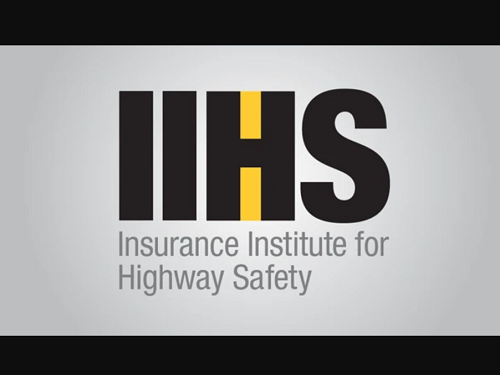According to a new study by the Insurance Institute for Highway Safety, almost nine out of 10 drivers of vehicles equipped with lane departure warning and prevention systems now keep those systems switched on.
[Above photo by IIHS]
Furthermore, seven out of 10 drivers of vehicles that give visual alerts when they exceed the speed limit also keep that feature running, the advocacy firm’s research discerned.
“These results hint at a growing awareness that crash avoidance systems and other technologies can improve safety,” said IIHS President David Harkey in a statement. “They also indicate that automakers’ efforts to increase usage rates have been a success.”

This latest IIHS study also found that lane departure warning and prevention systems could address as many as 23 percent of fatal crashes involving passenger vehicles.
Among nearly 2,400 vehicles of various makes that were brought to dealerships in the Washington, D.C., metropolitan area for service in the last year, IIHS researchers found that lane departure warning and prevention systems were activated in 87 percent. In contrast, only 51 percent of vehicles in a similar study conducted eight years ago had any kind of lane maintenance system activated.
The current survey showed that front crash prevention — forward collision warning or automatic emergency braking or AEB technologies — was activated in 94 percent of the vehicles, compared with 93 percent in the earlier study. In many of today’s designs, those features can’t be disabled, IIHS added.
At the time of the earlier study, warning-only systems were the most common type of system but the least likely to be switched on. However, the new study found that systems that are activated and deactivated through the in-vehicle settings menu, rather than a button, were more likely to be switched on. Seven years ago, only one of the observed models was designed that way, while a little more than half of vehicles in the new sample were. That is likely one factor contributing to the increased use.
“The results reflect a combination of better designs and a growing acceptance of crash avoidance systems, more generally,” said IIHS Research Scientist Aimee Cox, the lead author of the study. “The new designs make the feature a little harder to turn off and a lot less annoying for the driver.”
The study’s finding of high activation rates for visual speeding alerts is perhaps even more encouraging, IIHS said, given the relative newness of the feature in the U.S. and prevailing pessimism about American drivers’ willingness to use it. Those higher rates also bolster the results of a recent IIHS survey of drivers who had never used this anti-speeding technology, which showed that 60 percent of drivers would find speeding alerts acceptable.
The researchers found that visual speed warnings were activated in 70 percent of vehicles. In contrast, systems that gave an audible warning when the driver exceeded the speed limit were only switched on in 14 percent of the vehicles observed.
“The increased acceptance of lane departure prevention should translate into larger reductions in crash rates,” Harkey said. “The same thing can happen with anti-speeding alerts — which these results show are already more popular with drivers than some experts believed possible.”
 Nation
Nation
Confusion Reduces ‘Slow Down, Move Over’ Law Impact
November 14, 2025 Nation
Nation

